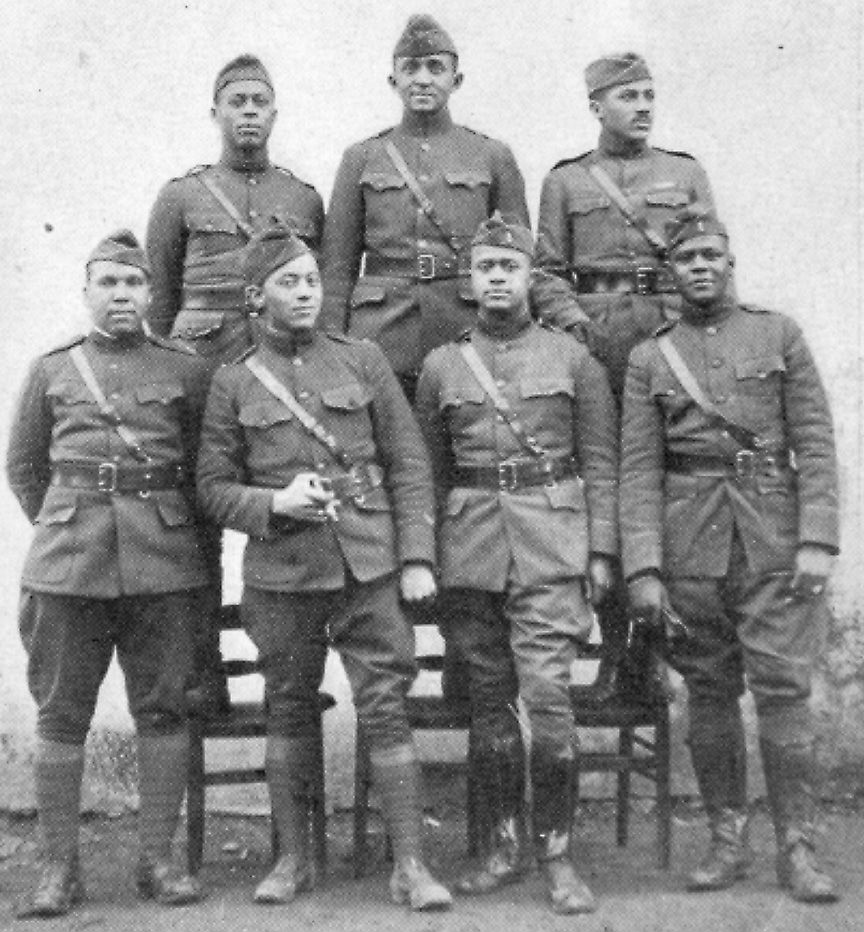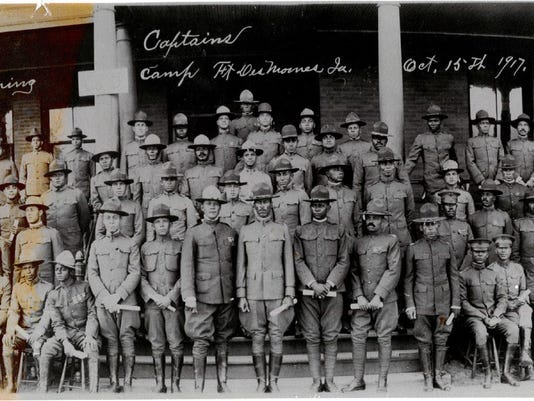Black History
Black World War I Soldiers at Camp Dodge in Des Moines, Iowa Died from the 1918 Pandemic

The 1918 ‘Spanish Flu’ posed a threat to American troops rivaled only by the Germans and their allies in World War I with hundreds of Black soldiers stationed at Camp Dodge in Des Moines, Iowa losing their fight against the deadly ‘flu virus.’
There were reportedly 3,000 Black soldiers at Camp Dodge when the virus began its fatal march. According to published reports, on Tuesday, October 1, 1918, doctors were monitoring 300 men. By the weekend, that number had skyrocketed to 1,500.
According to the Des Moines Register, “A camp document said many soldiers who awoke healthy were sick by noon. They were dead before supper.”
A Black soldier, Private Fennon Landers, from Henderson, Kentucky was the first to die. Army documents show 100 deaths in the first week and 350 the next. By October 9, the Army stopped issuing updates.
The Black Officers Training Facility
Not far from Camp Dodge at Fort Des Moines, history had already been made in 1917 when the United States Army decided to utilize the Fort as its first facility to train Black men as officers.

“This was the first time in American history that a substantial number of Black men would be commissioned as United States Army officers,” Attorney and author William Morris said during an interview with Iowa Public Television. “You had men with Bachelors and Masters degrees and even Ph.d’s who came out here to fight for their country.”
President Woodrow Wilson proposed the camp despite national concerns about arming Black men. Despite his Southern roots and segregationist stance, Woodrow navigated the “political struggle” and persevered in his plan to establish the training facility.
“The fear that Black men armed and taught military tactics could, perhaps, become an insurrectionist force was very real during the early part of the century, particularly in the South,” Morris stated.
Military records indicate more than 600 Black men received their commission in 1918. Morris’s grandfather was one of them.
“He was proud of his sacrifice, but at the same time, he was disappointed that that didn’t count for much when he came back in 1919,” Morris recalled.
End of a Pandemic…Continuation of Racism
By 1919 World War I had come to an end, and the ‘Spanish Flu’, named for the journalists in Spain who reported the pandemic while American journalists and others refrained from covering the devastatingly fatal pandemic due to government concern their reports would impact national morale, had also been defeated. And, Black soldiers returning home from Europe discovered a virulently racist backlash to their newfound confidence forged in the face of death on battlefields on the other side of the world. The next few years were defined by lynchings and other violent acts directed at Black America, resulting in a particularly brutal period known as the Red Summer of 1919, when hundreds were killed by white supremacists.

-

 Featured10 months ago
Featured10 months agoCalifornia Is the First State to Create A Public Alert for Missing Black Youth
-

 Featured9 months ago
Featured9 months agoAfrican American Leaders Stay the Course Amid Calls for President Biden To Bow Out of Race
-

 Featured10 months ago
Featured10 months agoThe Debate Fallout Lands on Both Candidates
-

 Featured9 months ago
Featured9 months agoPresident Joe Biden Decides to Withdraw from the Presidential Race
-

 Featured9 months ago
Featured9 months agoIn One of His Final Speeches as President, Biden Says It’s Time for ‘Fresh Voices’
-

 Featured9 months ago
Featured9 months agoPresident Joe Biden Describes Shooting of Donald Trump As ‘Sick’

